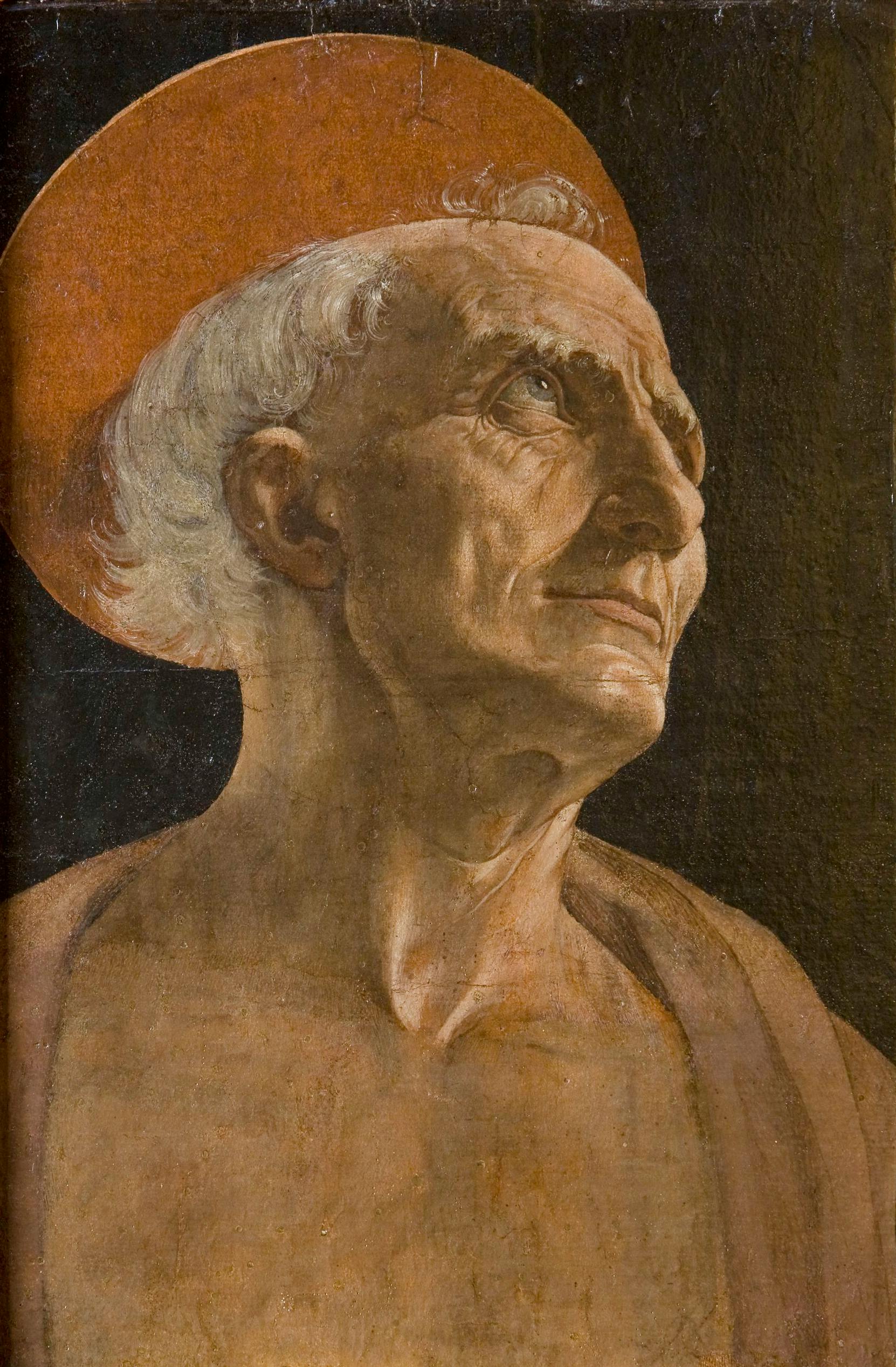Saint Jerome
Andrea del Verrocchio (Firenze, 1435- Venezia 1488)
The figure is identified as Saint Jerome by his aged appearance, his face weathered and torso semi-nude like an ascetic, a representation in accordance with an iconographic model popular during the fifteenth century and an alternative to the customary depiction of the saint dressed in the robes of a cardinal priest.
The work, created on paper and only later transferred onto wood for its integration in a collection, was probably a preparatory study for a different painting, perhaps the Crucifixion of Christ between Saint Jerome and Saint Anthony in the church of Santa Maria in Argiano, near to San Casciano in Val di Pesa. Like the painting in Argiano, the work is attributed to Andrea del Verrocchio, an extraordinary Florentine painter and sculptor whose workshop formed the training ground for a host of significant artists, the most famous of which was Leonardo da Vinci. The study of Saint Jerome is an important example of the artistic techniques of Renaissance-era Florentine workshops, where drawing, often enhanced with brush strokes, was an essential tool for representing real life and developing compositions. In the painting in the Palatine Gallery, the difference between the masterful depiction of the head and neck compared to the chest has led to the presumption that the drawing was enlarged and combined at a later date.
The work was part of the Medici collections until the seventeenth century.
